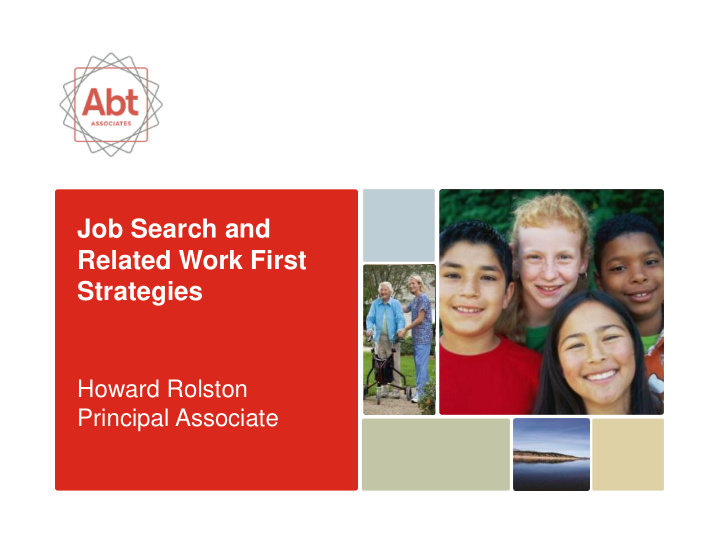



Job Search and Related Work First Strategies Howard Rolston Principal Associate
Job Search Assistance “Works” Caution: findings not from Food Stamps/SNAP Three programs: AFDC, U.S. and European UI Clear evidence of declines in benefits and caseload Mixed evidence on whether earnings and income rise (some variation by program) See Klerman, Koralek, Miller, Wen (2013) for a review of this literature (http://www.acf.hhs.gov/sites/default/files/opre/job_se arch.pdf) Abt Associates | pg 2
Active Ingredients? Ability to estimate contribution of enforcement versus services varies by program – A little evidence for AFDC — both seem to contribute – Stronger for UI In particular for UI evidence is consistent with: – A large impact of enforcement, and – A small to zero impact of assistance Ongoing research (at Abt) – DHHS/ACF random assignment study of assistance strategies – DOL/CEO multi-armed random assignment study to estimate the incremental effect of assistance, over and above enforcement Abt Associates | pg 3
Implications for Evaluation Job Search Assistance is a low-cost intervention – Estimated impacts are small (not capturing entry effects) – Perhaps $1,000 per year (NEWS LFA) Detecting small impacts requires large samples Low cost means small impacts could still pass a cost-benefit test How large are the required samples? – NEWWS suggests at least 3,000 (1,500T + 1,500C) – Larger if cluster random assignment to capture entry effects – Inefficiency of the latter implies need to be confident that programs really will be broad-based Abt Associates | pg 4
Recommend
More recommend